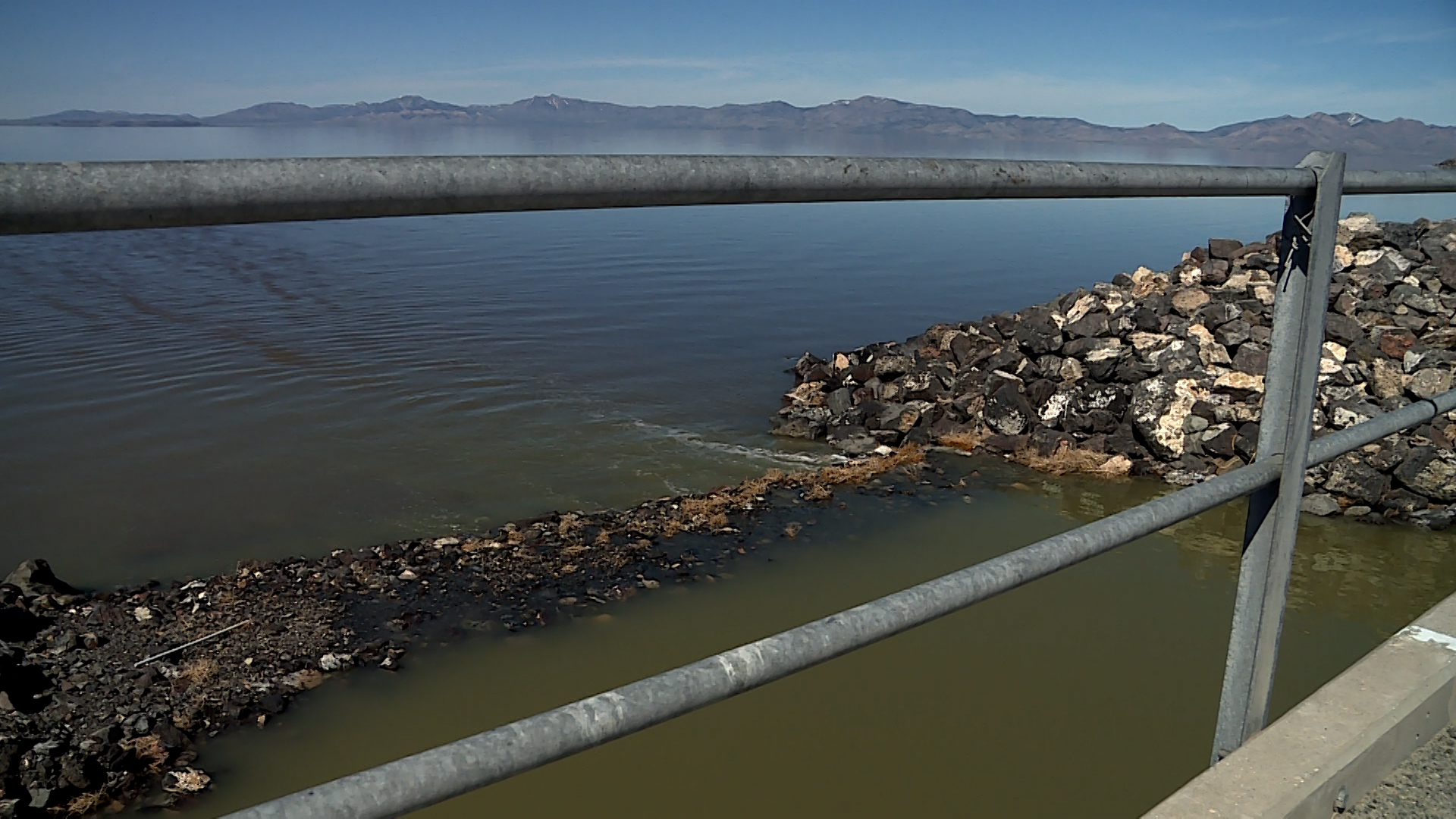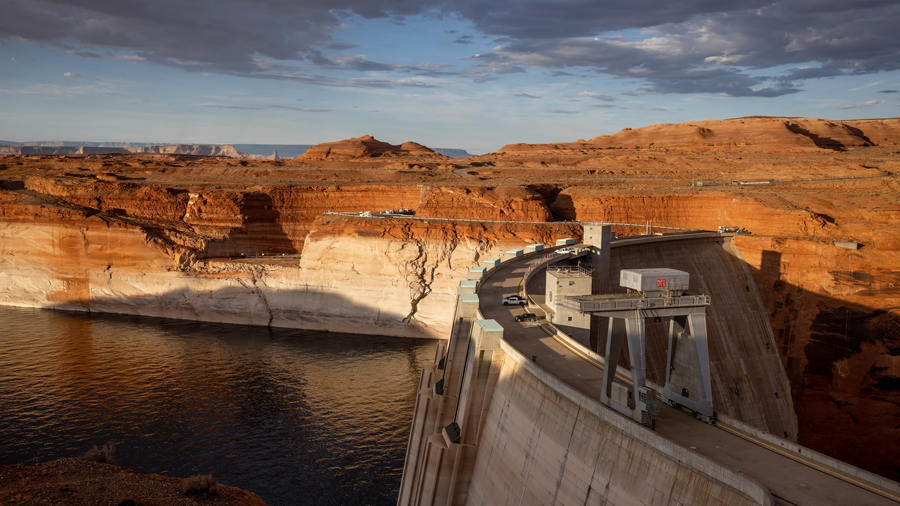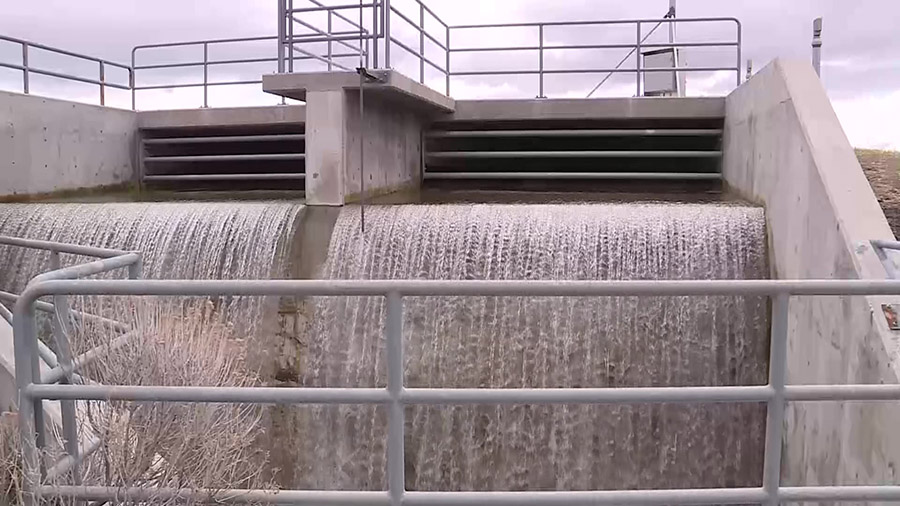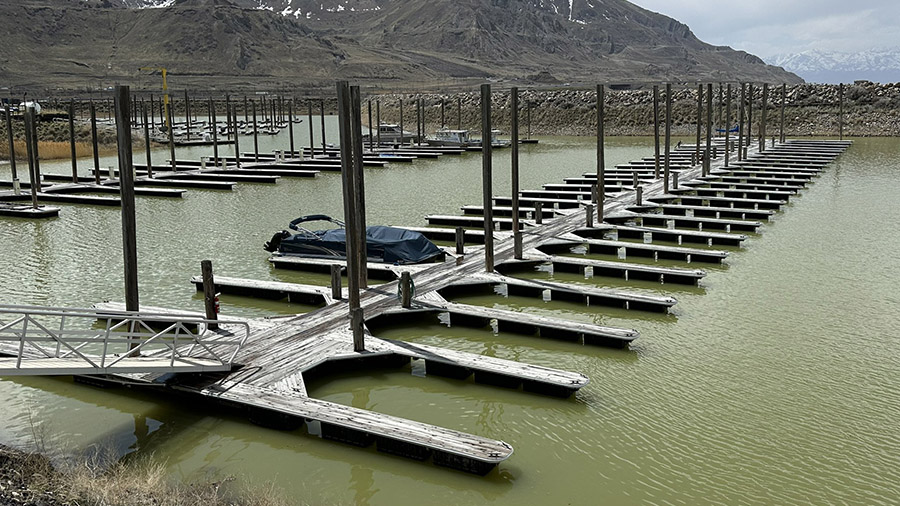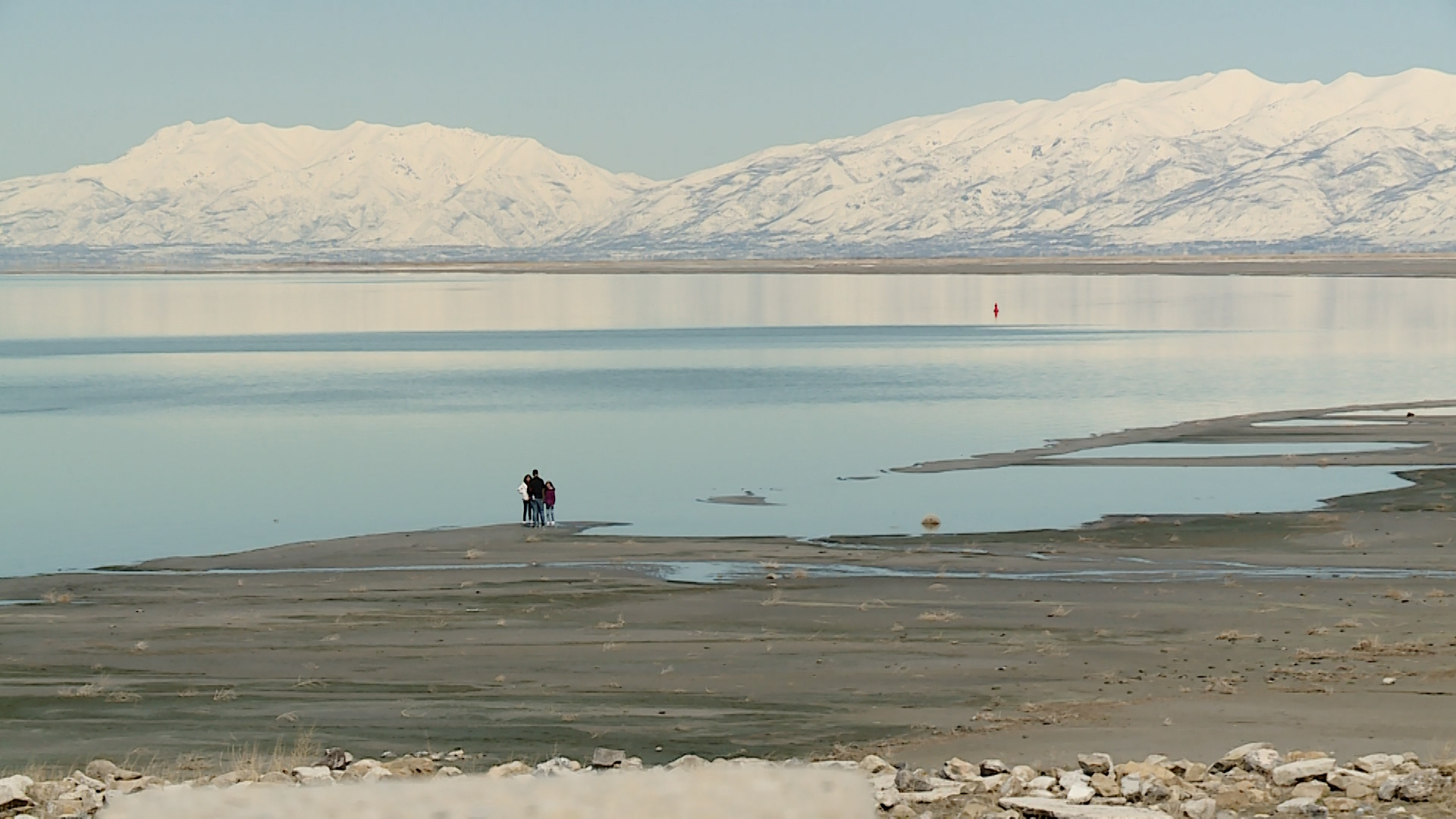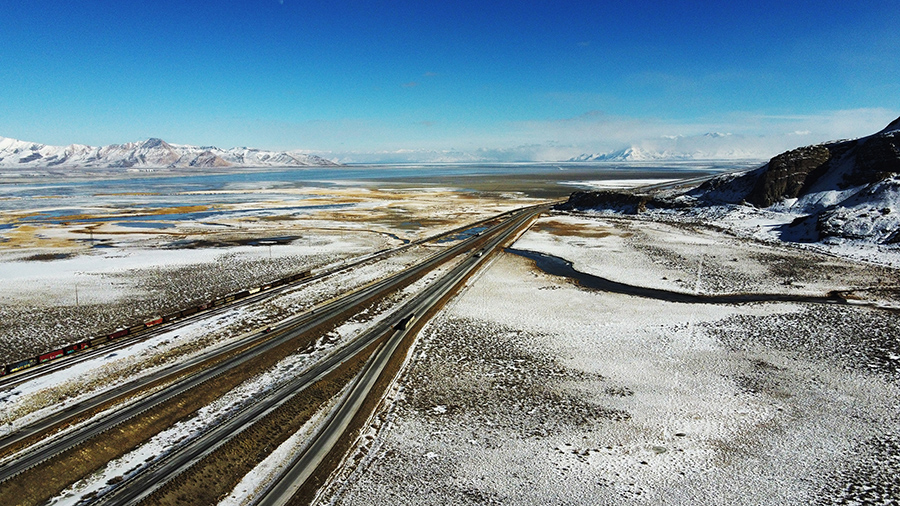GREAT SALT LAKE
Hazardous metals aren’t only in Great Salt Lake’s dust, they’re in the ecosystem too
Jun 3, 2022, 7:45 AM | Updated: 12:44 pm

FILE: The receding waters of The Great Salt Lake are easy to see from Chopper 5. (KSL TV)
(KSL TV)
LOGAN, Utah — Researchers have, in recent years, found that metals and chemicals dumped into Great Salt Lake’s tributaries not only flow into the lake itself but ultimately get trapped in the lakebed.
A new study suggests this isn’t only a concern when the lakebed becomes exposed; the metal is also ending up in the Great Salt Lake’s vital ecosystem.
“Metals, derived from runoff and atmospheric deposition, can be mobilized into the food web when plants transfer these metals to above-ground plant parts,” said Janice Brahney, an associate professor of watershed sciences within the Quinney College of Natural Resources at Utah State University, and one of the study’s coauthors. “Aboveground plant parts, like leaves and seeds, are eaten by insects and their predators, allowing these metals to move through the food chain.”
Decades of industrial activities, such as the Kennecott Mine just south of the Great Salt Lake, resulted in all sorts of hazardous chemicals ending up in the lake. These include arsenic, cadmium, copper, mercury and selenium, which were all discovered in previous studies of the lakebed.
USU researchers point out that these chemicals and metals have a “high degree of toxicity” with the capability of causing organ failure and different types of cancers. These studies prompted concerns about the drying of the Great Salt Lake because winds can pick up the particles and project them toward communities east of the lake.
What the researchers wanted to know is if this issue also factored into the vast Great Salt Lake ecosystem. Led by Edd Hammill, another associate professor of watershed sciences, the USU team collected three-square bulrush, hardstem bulrush, alkali bulrush and phragmites plant tissue and invertebrates from the Bear River Migratory Bird Refuge in Brigham City and the Great Salt Lake Shorelands Preserve in Layton.
They found that plants absorbed the chemicals and metals, for the most part, keeping them in their roots. Higher concentrations of certain toxins emerged both below and above ground. All four plants stored selenium and arsenic below ground but invasive phragmites, in particular, had the highest concentrations of lead and mercury in their seeds, Hammill explained in a news release Wednesday.
“And all the plants had significant concentrations of other metals in their aboveground tissues,” he added.
The three native bulrush species, for instance, contained high levels of copper above ground, as well as high traces of arsenic and lead.
Cadmium, copper and lead levels were all found in the invertebrates in these sites, such as spiders, caterpillars and dragonflies, according to the researchers. They said copper and cadmium levels were about 10 times higher in these insects than in wetland plants.
Their findings were published in Ecotoxicology last month. The Utah Department of Natural Resources helped fund the study.
The researchers note that the presence of metals within natural ecosystems, such as what they discovered in the Great Salt Lake, “presents health issues for both animals and humans.” The Great Salt Lake wetlands are home to an estimated 10 million birds either year-round or during migration every year, many of which feed on plant seeds and invertebrates.
Hammill said future studies will likely move up the food chain to look at metal levels in Great Salt Lake waterfowl.
While the results are alarming, researchers contend the findings also offer a possible blueprint to clean up the lake. Brahney says that if metals can be stabilized below ground, there can be “fewer opportunities for these metals to move through the food webs.”
Wetland plants can also be useful in this process given that it’s known they can absorb metals dumped into the lake. The study notes that some plant species “act as excludes for many metals, sequestering them in below-ground tissues.”
Preserving root systems by only cutting the aboveground parts of plants and then burying those parts in “low-impact locations” is something that land management agencies should consider as a short-term solution to the problem, Hammill said. The researchers also wrote that removing invasive phragmites biomass may reduce the transfer of led and other metals “while at the same time providing other ecosystem benefits.”
The team ultimately concluded that the complexity of the way different plants react to chemicals and metals means it’s important to carefully craft plant management policies in the future.
“These interspecific differences, and differences among metals within the same plant, mean any management actions relating to metal bioremediation must be undertaken with caution,” they wrote, “as mismanagement may lead to metals being transferred from the soil into terrestrial food webs, where they pose serious risks to animal and wildlife health.”
Ensuring Great Salt Lake water levels are as high as possible is also vital in reducing exposure to the toxic elements of the lake, Hammill added. The Utah Division of Forestry, Fire and State Lands currently projects that the lake will drop another 2 feet this year to a new all-time low, exposing thousands of new acres of its lakebed.
“Keeping the Great Salt Lake watered is critical to making sure the metals stay where they are now,” he said. “If the lakebed gets exposed, dust and metals become airborne, which has a considerable human impact and makes the whole problem worse.”


